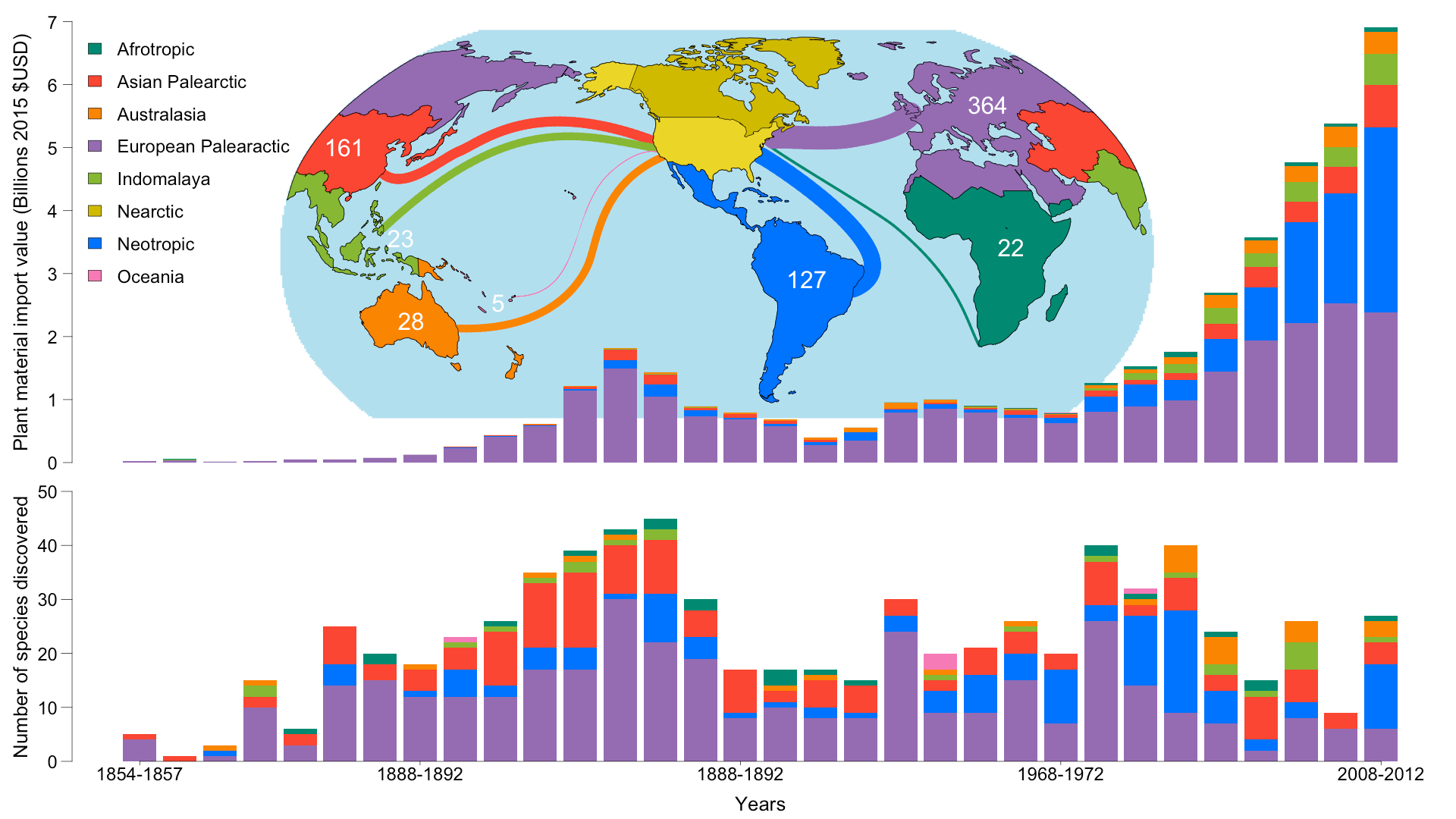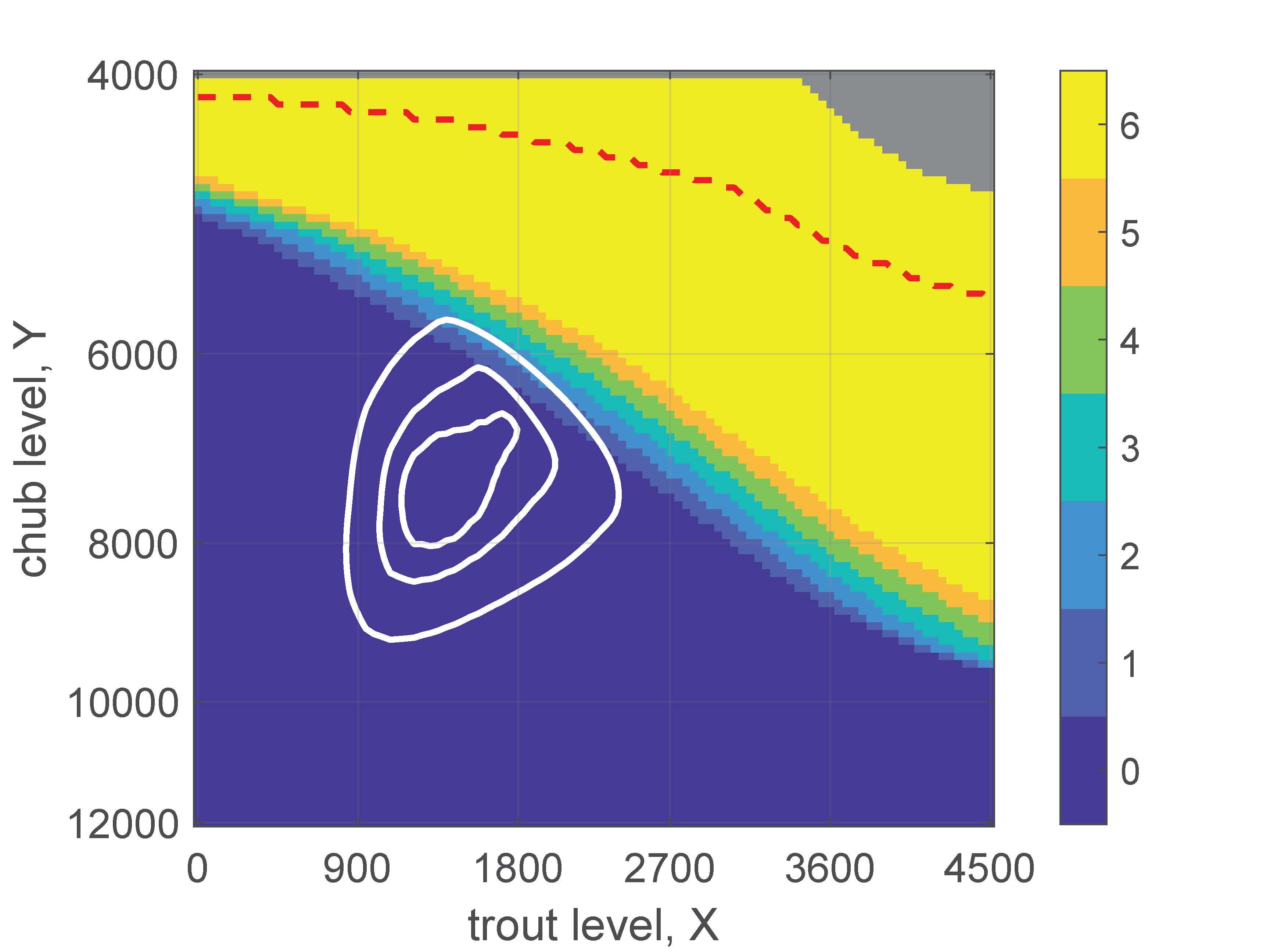
Working paper: Matthew MacLachlan, Andrew Liebhold and Michael R. Springborn. The hitchhiker’s guide to the greenery: estimating dynamics of 150 years of trade‐driven non‐native species introductions via plant material.
Click “Show more” below for a video animation of the import-introduction process and additional project information.

Shadow value viability–safely avoiding dangerous thresholds: Climate change mitigation, endangered species conservation and controlling infectious diseases are examples of a class of management problems with two key features: (1) avoiding thresholds–like 1.5 degrees Celsius warming, extinction, or outbreak–is key; (2) damages from violating the threshold are extreme but impossible to estimate with precision. Instead of maximizing ill-captured net benefits, pragmatic focus turns to avoiding the threshold with a given confidence at the least possible cost.
Such problems are notoriously difficult to solve (given loss of the Markov property from the “joint-chance constraint” created by the confidence-constrained objective). We develop a novel “shadow value viability” approach to solve the problem which also returns important economic intuition about the implicit cost of violating the threshold.
Click “Show more” below for papers on this topic.

Forward dynamic programming: Ecosystem-based management demands that decisions account for more than just a homogeneous resource stock–stock diversity (genetics, age, etc.) and conditions of the ecosystem economic system all matter. Standard dynamic optimization techniques (e.g. value function iteration) become unwieldy under large state spaces and/or complex uncertainty. We adapt forward dynamic programming (FDP)–novel to environmental and resource economics–to overcome computational limitations. The simulation-based approach allows for a large state space easily incorporates complex, multiple uncertainty without the need for quadrature.
Click “Show more” below for papers under review on this topic.

Loss of ecosystem services and incidence of malaria in Central America. Biodiversity loss from the impacts of invasive pests and pathogens has led massive environmental change. However, measuring the impact on human welfare is often elusive. We leverage a natural experiment involving an invasion wave of the fungal pathogen Batrachochytrium dendrobatidis (Bd) through Central America. We match data on loss of amphibians –and the natural disease vector (mosquito) control they represent–with data on annual malaria cases at the cantón (“county”) level. We will provide the first causal estimate of the impact of amphibian declines on an important human health outcome. The results of this research will have implications for international live species trading policies and the value of conservation.


